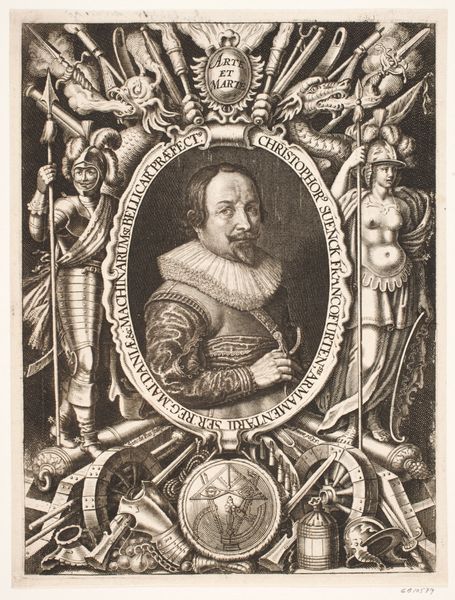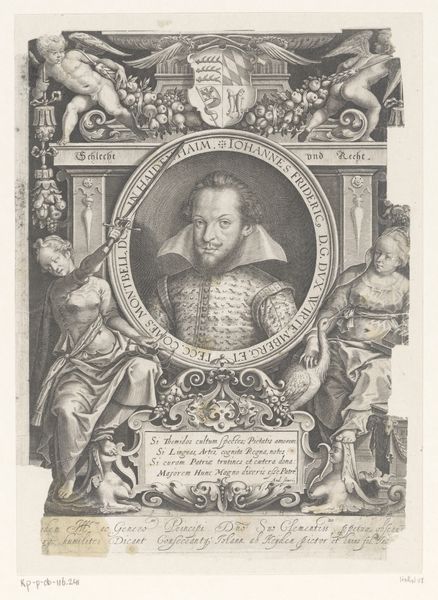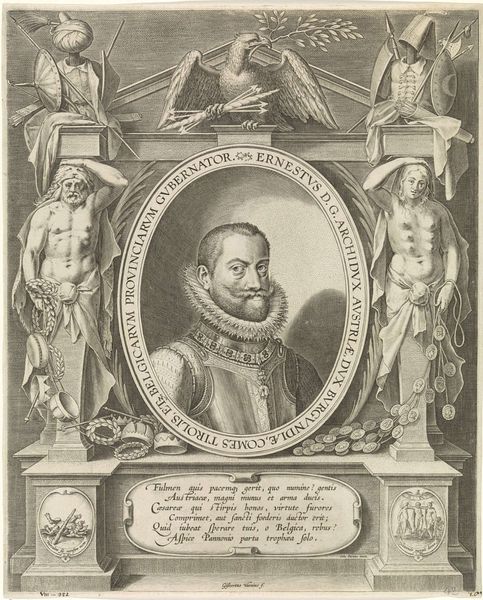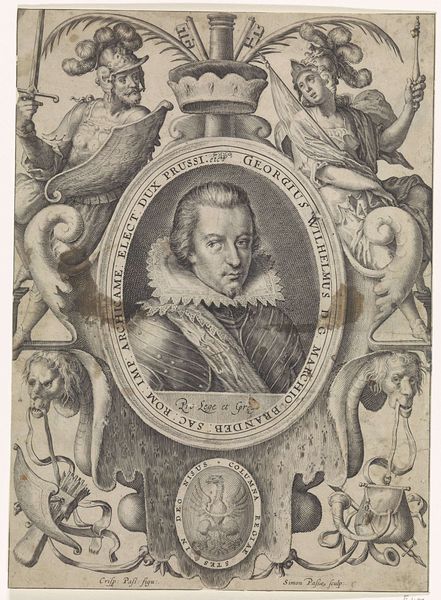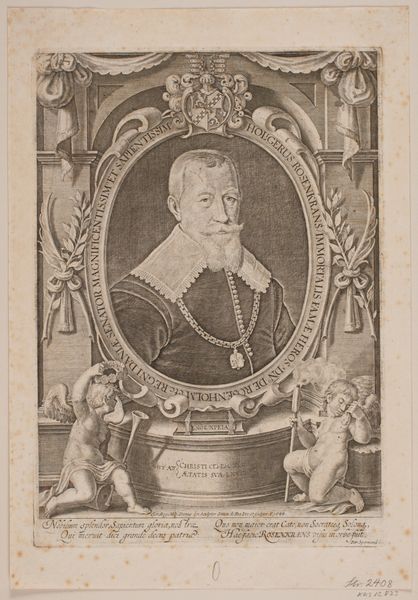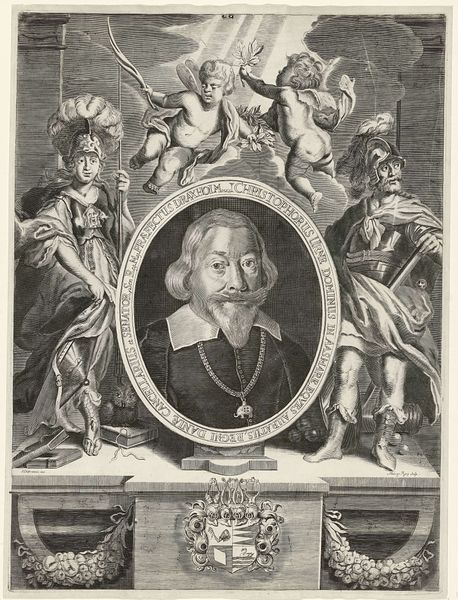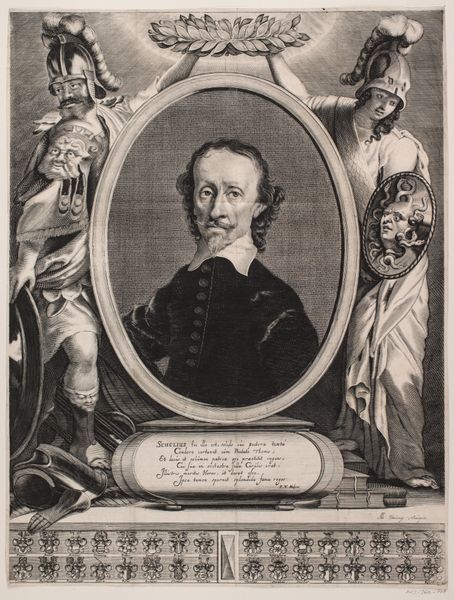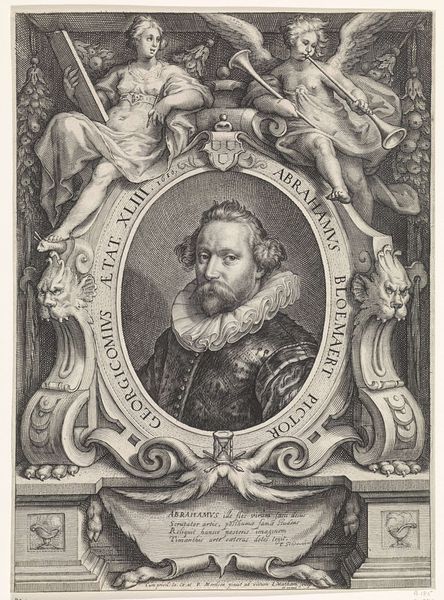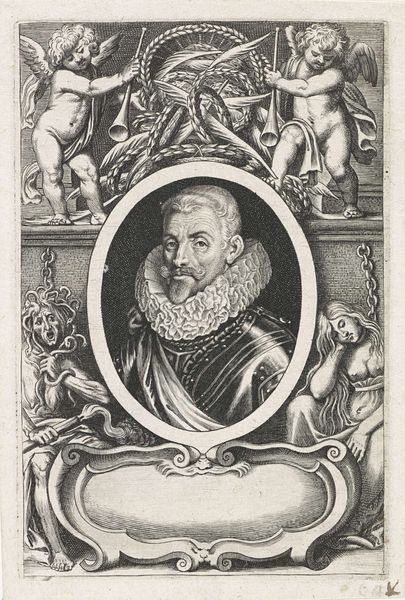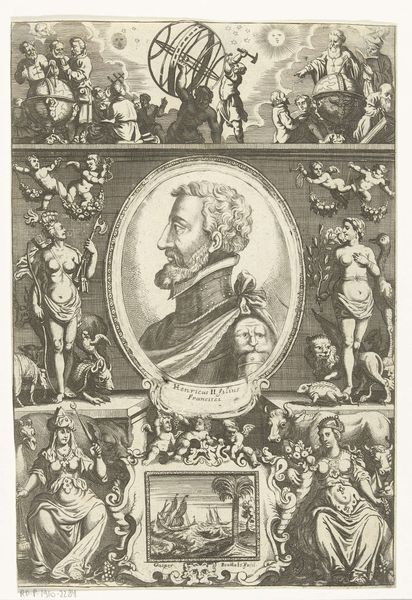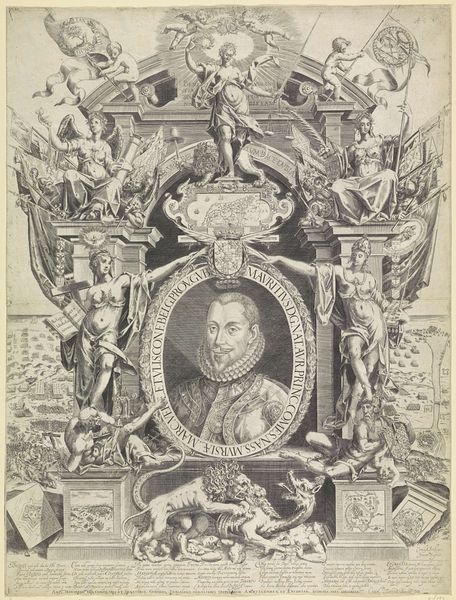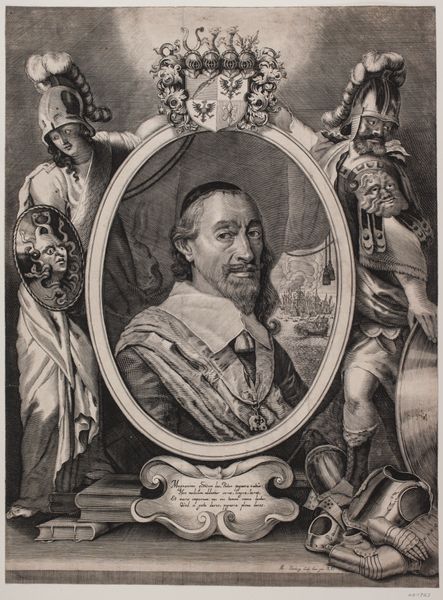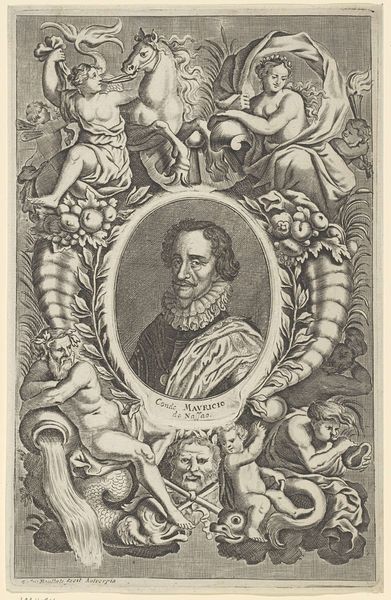
print, engraving
#
portrait
#
medieval
#
allegory
#
baroque
# print
#
mannerism
#
pencil drawing
#
history-painting
#
engraving
Dimensions: 137 mm (height) x 201 mm (width) (bladmaal)
Curator: Here we have Hans Andreas Greys' engraving, "Palle Rosenkrans til Krenkerup," created sometime between 1634 and 1644. It's quite striking, wouldn’t you say? Editor: Absolutely. My first impression is how densely packed it is, teeming with details. There's a palpable sense of status and power emanating from it. It is also oddly morbid. Curator: Indeed. The portrait, centered within an oval frame, depicts Palle Rosenkrans, a nobleman of the time. The surrounding allegorical figures, heraldic shields, and Latin inscriptions tell a rich story, revealing a complex construction of identity. Look at how the central figure’s likeness is meticulously crafted through engraving, showcasing not just his physical appearance, but his position within a deeply structured society. This work invites questions about patronage, the role of the artist as a creator but also social documentarian, and of course about how art can reveal truths about those holding positions of privilege and influence. Editor: Yes, and that engraving technique, consider the material process behind it – the skill required to render such fine lines, the labor invested, even the very metal upon which the image is etched speaks volumes. Note how these coats of arms reinforce ideas about legacy and inheritance through skillful repetition of a key emblem to further amplify family prestige. Then our eyes naturally follow the skeleton, sitting mournfully at the bottom corner on top of an orb. The tools and methods employed are as vital to understanding the piece as the imagery itself. Curator: Exactly. The symbolic language employed – the figures of Justice, Charity, and even Death, alongside the Rosenkrans family crests – offers a commentary on virtue, mortality, and lineage within the framework of 17th-century Danish society. I feel there's a fascinating intersection between personal identity, family legacy, and social obligation, reflecting both the opportunities and limitations experienced within a feudal power dynamic. The skeletons further seem to imply even legacy is limited, making it such an interesting intersection of these different ideals. Editor: And even the scale, we can't ignore how the printed material, whether on a humble sheet of paper or some fancy broadsheet, enables wider distribution of this representation, of Palle Rosenkrans’s image. It transforms him from a man into something consumed through printing technologies. This seemingly changes its inherent qualities and meaning entirely. Curator: Considering these points, perhaps what we are really grappling with when faced with this work is not simply a picture of a nobleman, but a potent visualisation of the interplay between individual and structural authority. It truly serves as a case study. Editor: Ultimately, I am reminded that this engraving is a window into how status and material come together in complex arrangements, providing valuable points of historical context on Danish history through class consciousness.
Comments
No comments
Be the first to comment and join the conversation on the ultimate creative platform.
